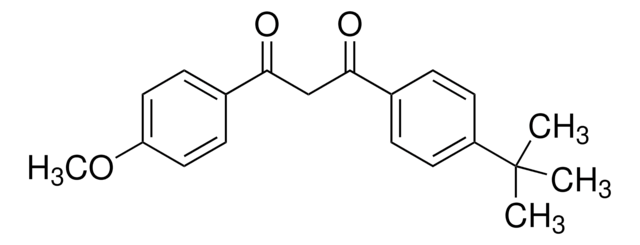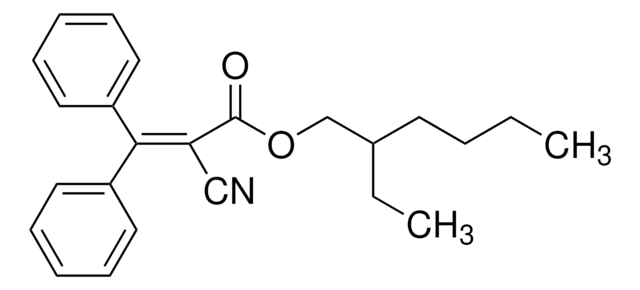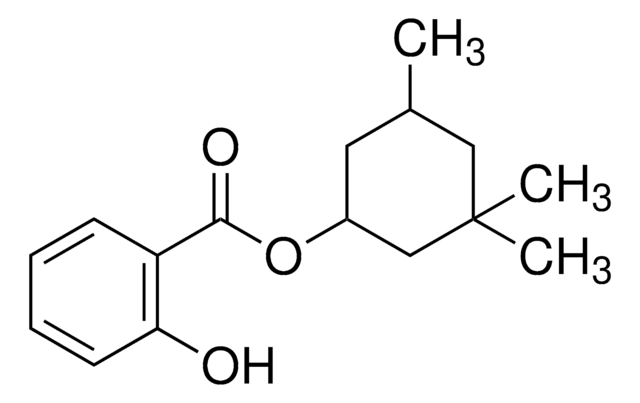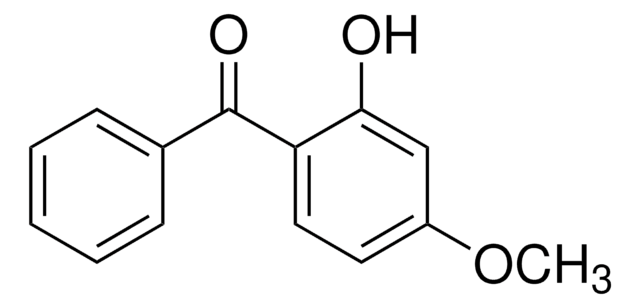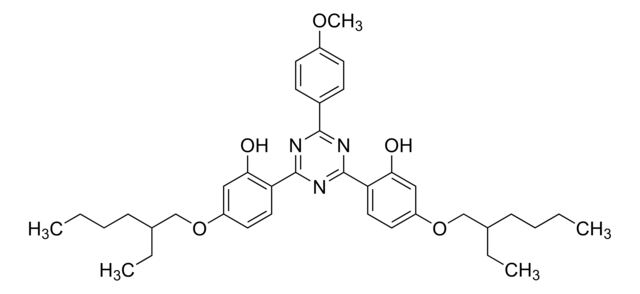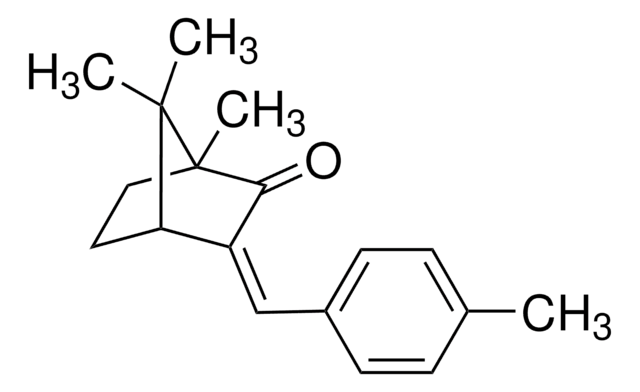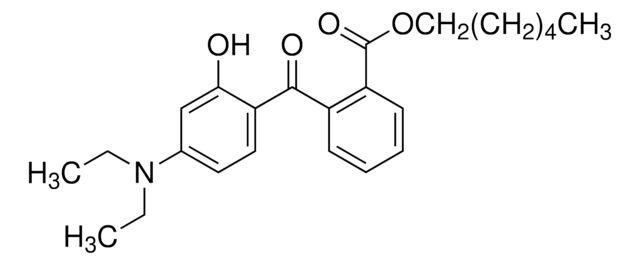16633
1-(4-Methoxyphenyl)-3-(4-tert-butylphenyl)-1,3-propanedione
analytical standard
Sinonimo/i:
Avobenzone, Butylmethoxydibenzoylmethane
About This Item
Prodotti consigliati
Grado
analytical standard
Livello qualitativo
Saggio
≥99.0% (GC)
tecniche
HPLC: suitable
gas chromatography (GC): suitable
Punto di fusione
81-84 °C
applicazioni
cleaning products
cosmetics
environmental
food and beverages
personal care
Formato
neat
Stringa SMILE
COc1ccc(cc1)C(=O)CC(=O)c2ccc(cc2)C(C)(C)C
InChI
1S/C20H22O3/c1-20(2,3)16-9-5-14(6-10-16)18(21)13-19(22)15-7-11-17(23-4)12-8-15/h5-12H,13H2,1-4H3
XNEFYCZVKIDDMS-UHFFFAOYSA-N
Cerchi prodotti simili? Visita Guida al confronto tra prodotti
Descrizione generale
Applicazioni
- Sunscreen formulations using reversed-phase high-performance liquid chromatography with diode array detection (RP-HPLC-DAD).
- Freshwater, saline water samples, rat plasma and skin layers using liquid chromatography-positive electrospray ionization-tandem mass spectrometry (LC-ESI-MS/MS) in multiple reaction monitoring mode (MRM).
Avobenzone may be used to study the photophysical characteristics, photosensitizing activity of a blocked diketo form derived from 4-tert-butyl-4′-methoxydibenzoylmethane (BM-DBM).
Indicazioni di pericolo
Consigli di prudenza
Classi di pericolo
Aquatic Chronic 4
Codice della classe di stoccaggio
11 - Combustible Solids
Classe di pericolosità dell'acqua (WGK)
WGK 2
Dispositivi di protezione individuale
Eyeshields, Gloves
Scegli una delle versioni più recenti:
Certificati d'analisi (COA)
Ci dispiace, ma al momento non ci sono COA disponibili online per questo prodotto.
Se ti serve aiuto, non esitare a contattarci Servizio Clienti
Possiedi già questo prodotto?
I documenti relativi ai prodotti acquistati recentemente sono disponibili nell’Archivio dei documenti.
I clienti hanno visto anche
Il team dei nostri ricercatori vanta grande esperienza in tutte le aree della ricerca quali Life Science, scienza dei materiali, sintesi chimica, cromatografia, discipline analitiche, ecc..
Contatta l'Assistenza Tecnica.